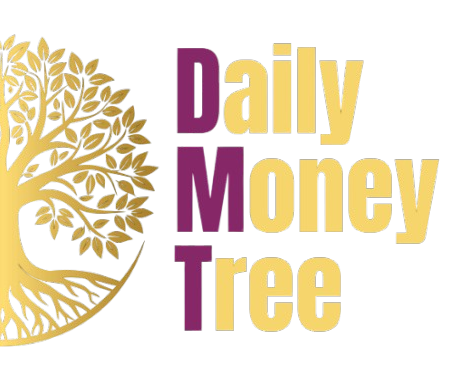Google penalties are the biggest fear of any blogger. So here’s what they consist of, how to avoid them, and how to solve them.
With the new Google updates, sites that are considered to be of low quality or that try to acquire more traffic by implementing the so-called Black Hat SEO techniques are penalized.
But what does it mean? It means that Google deletes your site – or part of its content – from its SERP. You will no longer appear in search results and this inevitably means a site with no organic traffic.
In fact, we usually notice a penalty when we open the Google Analytics dashboard and notice a sharp drop in traffic. However, this may not always be an indication of a penalty but it can also depend on the seasonality of your keywords.
And if you think that Google penalties are something uncommon, you are very wrong. Even the big names of the web have been affected, from the BBC to the Washington Post.
But we will talk about all this in this article. I will show you how to recognize a Google penalty, how to avoid it, and to overcome it. You will discover all the penalties that you can run into. I will explain how to identify if a drop in traffic is due to a Google penalty or other factors. But, first, lets answer the main question: What are Google penalties?
What are Google penalties?
Google penalties are actions to the detriment of the positioning of a website that Google takes when the so-called Quality Standards are broken.
The quality standards describe illegal practices that may involve the complete removal of a site from the Google Index or a manual or algorithmic anti-spam action on the site. If a site has been subjected to an anti-spam action, it may no longer be displayed in the results of Google.com or on any Google partner site.
Google

Why is a site penalized by Google?
There are many reasons why a website is penalized by Google. The most common are link selling, spam or security issues due to a hacked site.
Sometimes you are aware of and perform these actions. Such as strategies that aim to trick the algorithms in order to be able to position your site faster and acquire more traffic in a shorter time (Black-hat).
Other times, however, these actions are completely unexpected and happen for example when your SEO is of poor quality or when your website is hacked.
What Are the Types of Google penalties
There are mainly two types of penalties:
- manual actions
- algorithmic penalties.
Manual actions are actions taken deliberately by Google. They are reported in the Search Console and mainly concern SPAM.
The algorithmic penalties, on the other hand, are not reported and are not always real penalties. They concern the adjustments of the search results based on the updates of the Google algorithms.
Manual actions or SPAM actions

Manual actions are sanctions that a team of Google specialists inflicts on a site that has violated the rules on its website and mainly concern spam.
There are 12 penalties that can be incurred:
- Spam generated by users
- The free host containing spam
- Structured data problem
- Unnatural links that lead to your site
- Non-natural links from your site
- Lean content with little or no added value
- Cloaking and/or redirect commands not allowed
- Pure spam
- Compromised images
- Hidden text and/or excess keyword usage
- AMP page content discrepancies
- Redirect commands not allowed on mobile devices.
If your site has suffered any of these penalties, it will be reported to you under the Security & Manual Actions> Manual Actions tab in your Google Search Console.
But let’s take a closer look at these types of penalties and find out how to prevent and resolve them.
Spam generated by users
User-generated spam mainly affects spam found in blog comments and forum threads.
The best way to counter this type of penalty is to prevent and eliminate all spam on your site. Especially with regards to blog comments, there are many ways to do this. Starting from manually approving comments to installing special plugins, such as Akismet.
Personally, I use both ways. If you try to leave a comment, it is not automatically approved but goes through moderation.
I constantly monitor the comments.
Free host containing spam
Very often I have talked about the importance of investing in a good hosting plan. This is not only to be able to keep the site clean and fast but also because most free hosts contain spam.
In this case, the advice is to move your site to paid hosting.
Structured data problem
If you want to change the structured data of your blog. This will guarantee better ranking, but the important thing is to do it properly.
Google can in fact penalize you if you use:
- markup of content not visible to users
- markup of irrelevant or misleading content
- other manipulative behavior.
So, if you want your site to appear in Google search results, you need to make sure your site’s markup follows Google’s structured data guidelines.
“Unnatural” links to your site

Backlinks, or other sites that link to our website, are very important for the growth of a blog. The basic mechanism is very simple: if many people mention your article, it means that they found your content particularly interesting.
Something, in fact, that deserves to be mentioned and disseminated.
Google, therefore, considers backlinks as a positive sign from the web and tends to reward your content. Because of this, backlinks have become a ranking factor.
What happened then? Too many people have started doing link exchanges. There are even container sites (Web Directory) that in exchange for a fee or a subscription, insert a backlink on their sites that refers to your website.
However, Google has continued to evolve constantly to face all these falsifying techniques. Google manages to intercept all those backlinks that are not natural but created with the express purpose of manipulating PageRank.
Choosing the right websites is important to make Google understand that we are not spammers. If you have a travel site, a link from a site dealing with refrigerators is not ideal. Google wonders why.
⚠️ But did you know that even your competitors can send you spam backlinks to harm you?
Your competitors can damage all your website with an attack of negative SEO. What is it about? Very simple.
It consists of sending you numerous backlinks (hundreds) from spam sites so that Google interprets that your site is also of low quality, penalizing you.
Hacked sites

Getting hacked is the worst thing that can happen to your site (and your business!). It’s one of those delightful cases where you can get two beatings instead of one. Hackers damaging your site and Google penalizing you.
In this case, the best advice is always to protect your site. Unfortunately, very few people do it.
Here are some tips to protect the site:
- always keep the plugins updated: they are the easiest gateway to a site
- never use the name “admin” for access
- create a strong password (“B $ 6q2cwxfbd ^” is a strong password. “Admin”, “12345A” or “password” are not strong passwords!)
- use a hosting that invests in security such as Siteground.
Non-natural links from your site
The same thing that goes for inbound links applies to outbound links. If your blog is of quality, Google expects you will always link quality resources, which are useful insights for your users.
If your links are on spam or low-value sites, Google may penalize you. So watch out for the resources you recommend.
Never accept link exchange requests and do not participate in link schemes. Let your blog always grow slower, gradual but lasting.
What are Google penalties for lean content with little or no added value
What Google expects is that every new content on the web is original and brings added value.
If it has these characteristics, it is easy for your article to rank high on the SERP. If it does not have them, in addition to not positioning you could be penalized.
So what are the contents that could make you fall into oblivion?
- Automatically generated content, such as texts translated from other languages without editing or those generated via RSS feeds
- Articles with affiliate programs with no added content, such as a tutorial or detailed review
- Contents of other sites.
- Doorway pages, ie pages created ad hoc to be in the first search results and “catch clicks” but which then refer to other pages.
Cloaking and/or redirect commands
Cloaking is a technique used to present users with a link other than the one presented to Google.
Put very simplistically, it is a deceptive technique to make readers believe they are clicking on something that instead leads to something else.
Pure spam
If your site is flagged by Google as a spam container, be prepared to sink into the search engine’s oblivion.
To be considered spam, it is enough to violate one or more of the rules described so far. No more, no less.
Compromised images
Also in this case we are talking about cloaking, no longer about the text but about images. What users see is what search engines need to see. There must be no hidden images to generate fraudulent clicks.
Simple and concise.
Hidden text and/or excessive use of keywords

An old Black Hat SEO technique that used to work damn well and is now penalized, is keyword stuffing. It is cramming the content (or the whole page) of keywords with the goal of increasing keyword density.
Even more deceptive is when the keywords are written in the same color as the background. As if for example now I started writing a list of related keywords but in white color. You on the screen would not be able to read them but Google would.
This technique is called hidden text, and this is also a very forbidden practice.
AMP page content discrepancies
This is when an AMP page is different from the canonical page.
In this case, Google will de-index the AMP pages while leaving the canonical ones of your website visible.
Redirect commands not allowed on mobile devices
The last of the Google Commandments is: never lead users to a site other than the one shown on mobile devices.
Algorithmic penalties

If you ask the average person “what are google penalties?”, their answer would probably gravitate towards manual penalties. Another type of penalty that I would like to bring to light is called “algorithmic penalty”. These are not Google’s manual actions but are a natural consequence of Google’s algorithms which change constantly.
This type of penalty is more difficult to intercept since not being a manual action, no notification from Google takes place.
But what does an algorithmic penalty consist of? In practice, the Google algorithm, as has happened several times in 2020, is updated and you realize that your site has lost ranking and consequently traffic.
Traffic is one of the main signs that can indicate an algorithmic penalty. To check this, just go to Google Analytics and compare the data of the last few weeks with those of the previous weeks. If you notice a major drop, then you are probably a “victim” of a penalty.
How to know if my site has been penalized by Google?
As for the manual actions, you will receive an email with the notification of the penalty. You can also check on the Google Search Console. Just go to the menu on the left and click on Safety and manual actions> Manual actions.
For algorithmic penalties, I recommend using Google Analytics or Semrush.
Generally, a minor manual penalty is eliminated as soon as it is resolved.
For serious violations, however, such as those concerning pure spam, the site is permanently banned from the Google indexes.
If your website (wide-site matches) or some content on your blog (partial matches) has been penalized with a manual action, through Search Console you can submit a review request once you have cleaned and rearranged the offending content.
Once this is done, you just have to wait and hope that the Google team will accept your changes and reposition the penalized content in SERP.
Why doesn’t my site appear on Google?
Before concluding this long study on Google’s penalties, I would like to examine another situation that happens.
There are no manual reports, there have been no algorithmic penalties but you have suffered a sharp drop in traffic which may also have made your site disappear from the SERP.
What happened?
First, you need to check. Open the Google homepage and search for the site: your domain. extension, for example, site: dailymoneytree.net.
If there are any results (the first should be the homepage of your site) then it is a drop in traffic but the site is indexed.
If there are no results, enter the WordPress dashboard and in the left menu go to Settings> Reading and check that the Discourage search engines from indexing this site box is not selected.
Here are some possible reasons why your site does not appear on Google:
- layout change: if you have redesigned your website, perhaps by installing a new template or because you have switched from a template to Elementor, then you may see a sharp drop in traffic. Don’t worry: the site will reposition itself in a month or two if there are no errors
- Seasonality: If you propose seasonal topics, you will likely notice trends. For example, an article on how to take beautiful photos of the sea will surely have a peak of visits in the summer months
- Robots.txt file errors: If you set the Robots.txt file incorrectly, you may have blocked some pages from crawling. In this case, better take a look.
Conclusion
This was probably not one of the most fun articles you have read. But, my main goal was to explain what are google penalties, and how to avoid them.
I hope that if you have had a penalty, this guide has helped you solve the problem. Or, even better, I hope that reading this article has helped you to clarify the practices prohibited by Google so that you never get penalized.
I’ll give one last piece of advice, the best I can give you. Before thinking about how to generate an entry from your blog, how to get more traffic, how to SEO, think about who reads you. Offer added value and don’t write content just to “capture the keyword”.
To your success.







